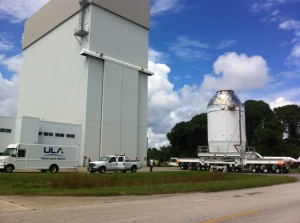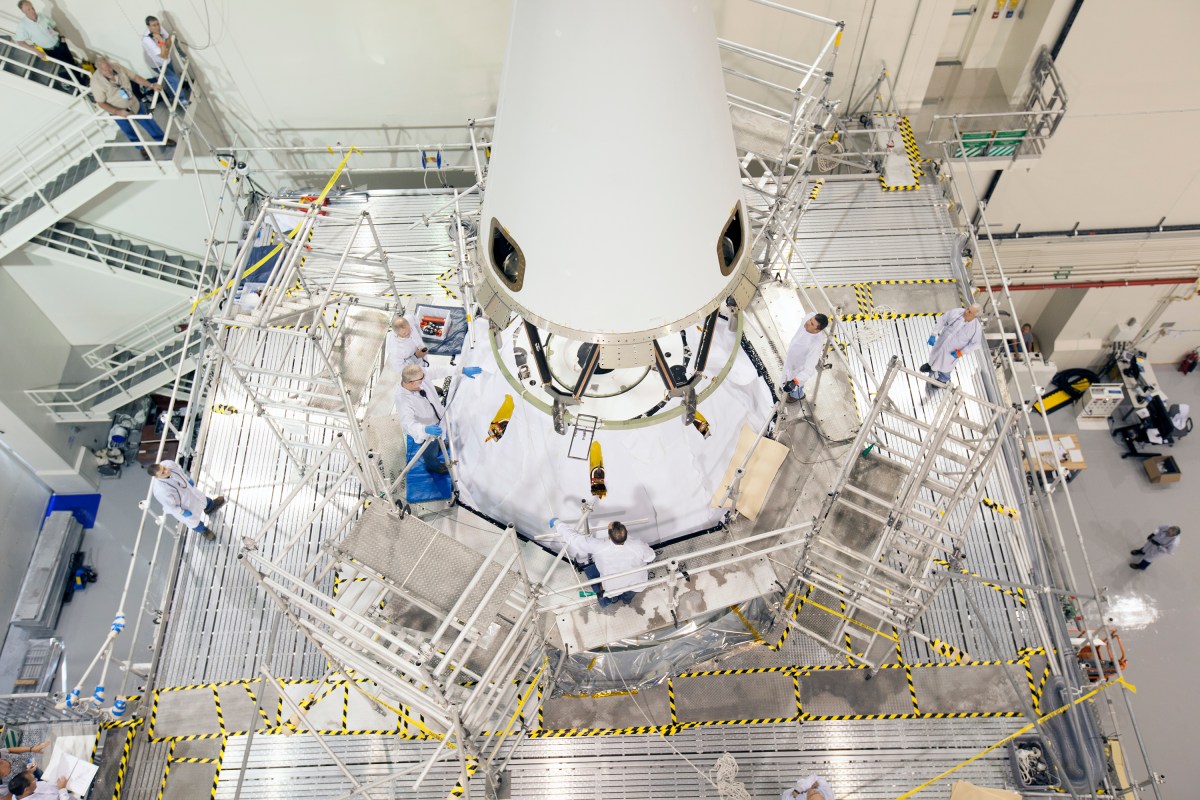The convoy escorting Orion to the launch pad is rolling again following a short stop in front of the Vehicle Assembly Building. In the future, the Vehicle Assembly Building will be more than a short pause for Orion – it will be the place where the spacecraft gets lifted and joined to the Space Launch System, NASA’s new heavy-lift rocket being designed to launch Orion and a crew of astronauts to deep space destinations including an asteroid and eventually Mars.
Category: Orion-1
Fly Your Name on Orion
NASA’s Orion spacecraft is preparing for its upcoming flight test in December, and you can submit your name to be flown on the flight! Submit your name by following this link and your first and last name will be digitized and placed on a dime-sized microchip that will be stowed inside the uncrewed Orion spacecraft as it makes two orbits reaching up to about 3,600 miles above Earth before coming back and splashing down in the Pacific Ocean. Your name will also make it farther out into space on future exploration missions by NASA, too! You have until Oct. 31 to sign up to send your name into orbit and take this chance to write your name across the sky.
Watch ‘Trial By Fire’ – The Story of Orion’s Flight Test
Launch Abort System Installed for Orion Mission
 Technicians and engineers at NASA’s Kennedy Space Center in Florida installed the Launch Abort System atop the Orion spacecraft Friday as launch preparations continue for December’s launch. The LAS, as it is known, will not be active during this flight test but would, during future flights, be equipped to act within milliseconds to pull the spacecraft and its astronaut crew away from its rocket so the Orion could parachute back to Earth safely. For the upcoming Orion flight test, the LAS will have an active jettison motor so it can pull itself and the nose fairing away from the spacecraft just before Orion goes into orbit.
Technicians and engineers at NASA’s Kennedy Space Center in Florida installed the Launch Abort System atop the Orion spacecraft Friday as launch preparations continue for December’s launch. The LAS, as it is known, will not be active during this flight test but would, during future flights, be equipped to act within milliseconds to pull the spacecraft and its astronaut crew away from its rocket so the Orion could parachute back to Earth safely. For the upcoming Orion flight test, the LAS will have an active jettison motor so it can pull itself and the nose fairing away from the spacecraft just before Orion goes into orbit.
Delta IV’s Move, Elevation a Story of Coordinated Success
 Standing an 18-story rocket on its tail so it can fly into space requires careful coordination among a team of pros along with an intense focus on safety and quality. The rocket in this case was the ULA Delta IV Heavy that is being prepped to lift NASA’s first Orion spacecraft into orbit during a flight test in December. You can read details about the move and lift that took place Wednesday morning here.
Standing an 18-story rocket on its tail so it can fly into space requires careful coordination among a team of pros along with an intense focus on safety and quality. The rocket in this case was the ULA Delta IV Heavy that is being prepped to lift NASA’s first Orion spacecraft into orbit during a flight test in December. You can read details about the move and lift that took place Wednesday morning here.
Orion is designed for deepspace missions that will fly astronauts to an asteroid and eventually on the journey to Mars. But there are important evaluations to perform first, before the spacecraft carries any people with it. That’s what this uncrewed flight test is for. This mission will see the Orion lofted into an orbit 3,600 miles above Earth using the Delta IV Heavy. The spacecraft will be steered back into the atmosphere for reentry at some 20,000 mph to gather data on the heat shield at speeds approaching those it will encounter when returning crews from deep space. Many of Orion’s other critical systems will also be evaluated during the important flight test.
Orion’s Flight Test Rocket Moves to Launch Pad

The rocket that will carry an Orion spacecraft into orbit for the first time was moved to Launch Complex 37 at Cape Canaveral Air Force Station on Monday. Assembled inside the Horizontal Integration Facility adjacent to LC-37, the United Launch Alliance Delta IVHeavy will be lifted into its vertical position later. The Heavy configuration, which is made up of three Delta IV core stages with one RS-68 engine, is one of the strongest rockets available to NASA while the agency builds the Space Launch System.
The Delta IV Heavy will send an uncrewed Orion spacecraft on a two-orbit, four-hour flight around Earth that will culminate with a high-speed entry into the atmosphere to test the heat shield’s ability to withstand return from deep space. Though this flight does not include any astronauts, Orion is being designed to fly people beyond Earth orbit for the first time since the Apollo program that landed astronauts on the moon from 1969 to 1972.
Fueled Orion Taken to LAS Facility
 NASA’s new Orion spacecraft will make its first trip to space in December. The spacecraft took a much shorter trip Sunday when it was moved from a specialized fueling facility at Kennedy Space Center to the Launch Abort System Facility to continue the preparations necessary for launch.
NASA’s new Orion spacecraft will make its first trip to space in December. The spacecraft took a much shorter trip Sunday when it was moved from a specialized fueling facility at Kennedy Space Center to the Launch Abort System Facility to continue the preparations necessary for launch.
The launch abort system is designed to protect astronauts if a problem happens during launch, by pulling Orion away from a failing rocket. Because this first Orion flight will be uncrewed, the abort motor that would fire to pull the spacecraft away is not active. However, the jettison motor which will separate the launch abort system from the crew module in both emergencies and normal flights, is one of the critical systems being tested on Orion’s flight test.
Attached to an interstage, Orion will eventually be mounted to the top of a United Launch Alliance Delta IV Heavy rocket and launched on a two-orbit, four-hour mission that will test the Orion heat shield under high speed conditions similar to those it will encounter when returning from deep space missions with astronauts aboard.





